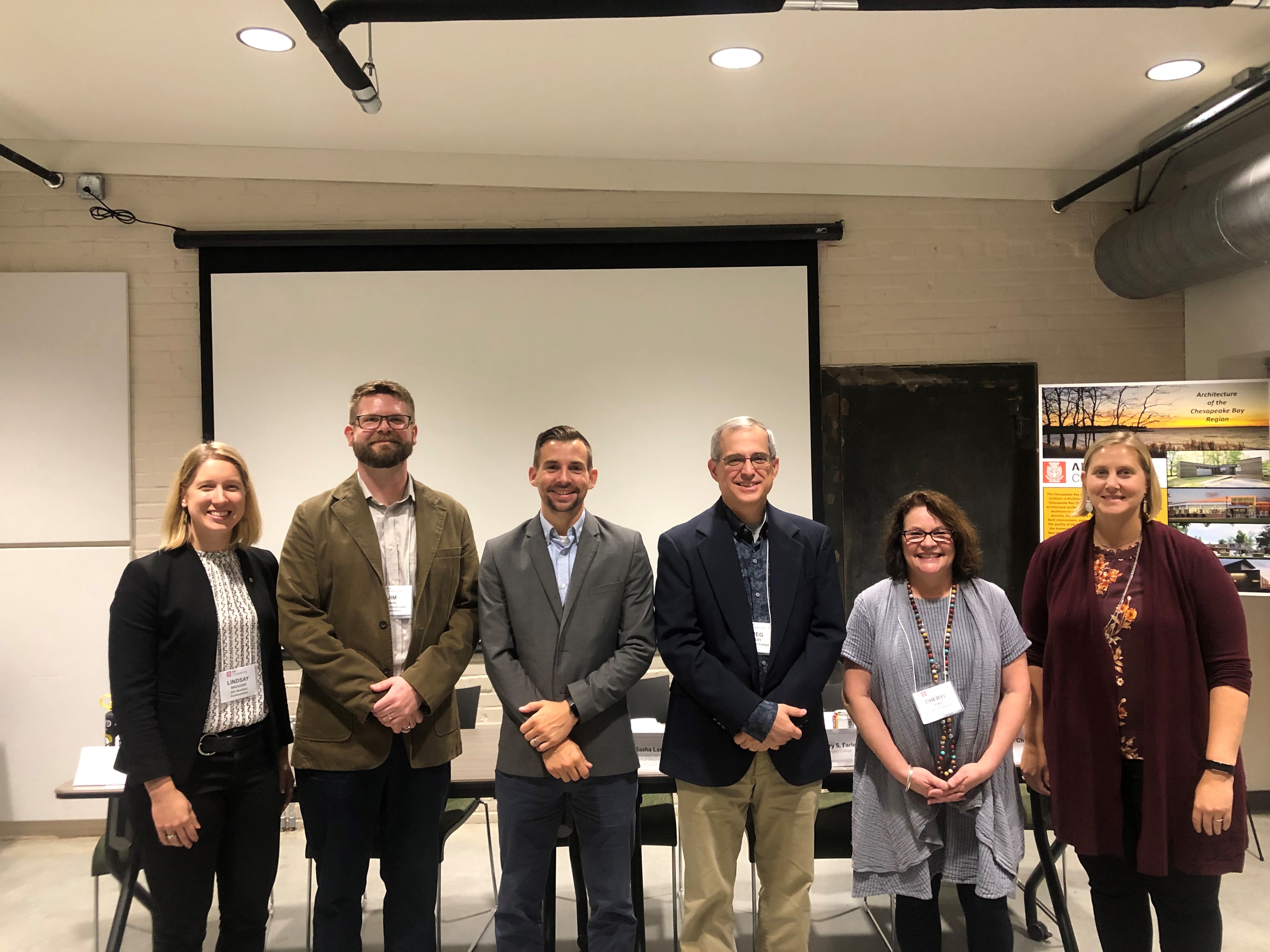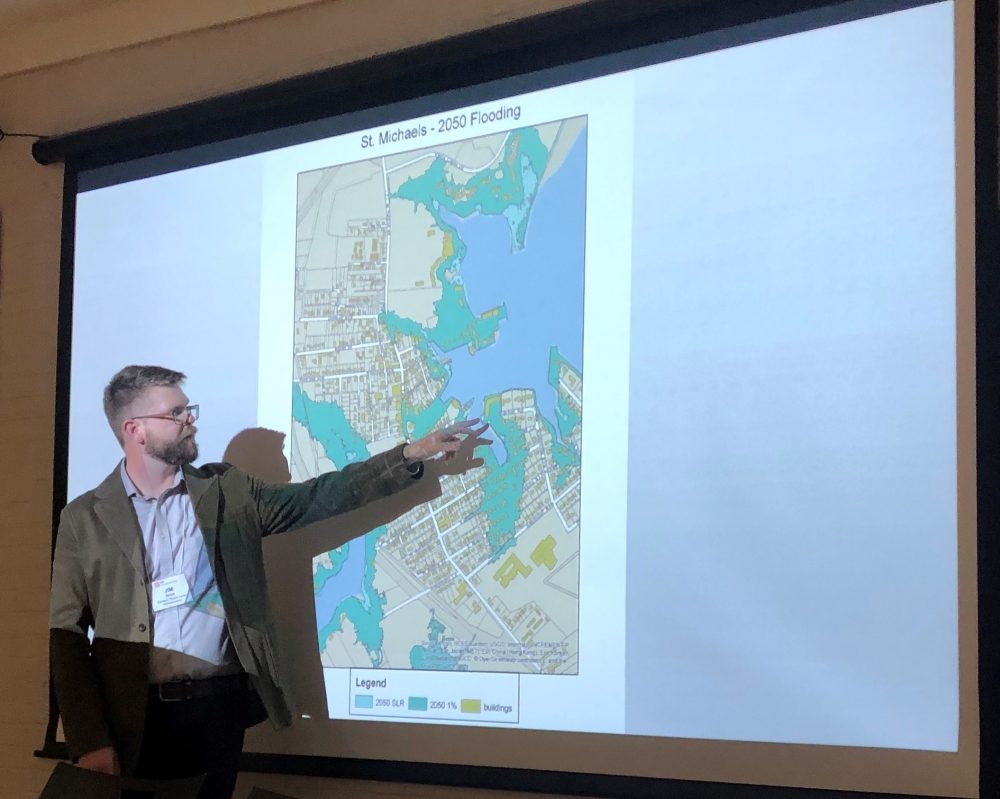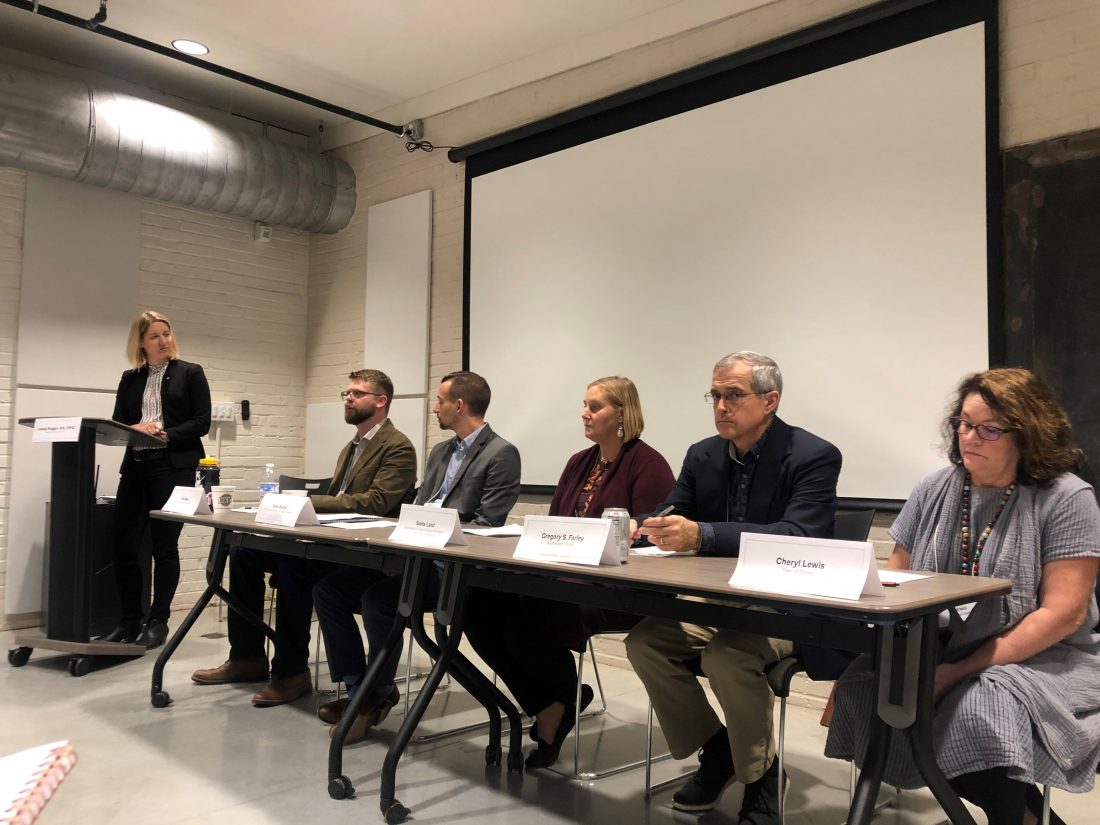Chesapeake Bay Architects Discuss Design and Climate Adaptation
Preparing for tomorrow, today.
That is the key message received by attendees of “Architectural Stewardship of Maryland’s Eastern Shore,” Eastern Shore Land Conservancy’s (ESLC) first-ever Coastal Resilience workshop aimed at people within a professional sector or discipline. The Chesapeake Bay chapter for the American Institute of Architects contacted ESLC to collaborate after viewing a video published in The Spy about sea level rise on Maryland’s Eastern Shore.
The goal for collaboration was to help designers and planners understand how information on climate adaptation could improve their architectural practices within the Chesapeake Bay watershed. Additionally, the workshop established a foundation for the untapped relationship between the design community and the climate adaption community on Maryland’s Eastern Shore.
Scroll down to read highlights from each of the event’s speakers
According to ESLC’s Coastal Resilience Program Manager, Jim Bass, there is a lot of overlap between the work architects do for their clients and the work climate adaptation planners do for their communities. Ensuring safety, security, and well-being is at the core of both disciplines, yet Wednesday was the first formal meeting of these groups.
“We’re aware of each other’s groups now, and I think we’re well established for further conversation in the near future,” Jim says. He has high hopes for collaboration that will continue to evolve and address climate-related vulnerabilities across the region.

From left: Lindsay Bugger--National Chapter for the American Institute of Architects, Jim Bass--Eastern Shore Land Conservancy, Kyle Overly--Maryland Emergency Management Agency, Gregory S. Farley--Washington College, Cheryl Lewis--Town of Oxford, Sasha Land--Chesapeake & Coastal Service of Maryland DNR
The workshop was the first step–it engaged experts from across the region to share their passionate perspectives on climate adaptation strategies and issues affecting Maryland’s Eastern Shore.
The panelists brought their expertise and energy from academia, nonprofit, and local and state government sectors, and they were pleased to be met by a crowd who was equally energetic. The attendees, mostly practitioners, had an informative and eye-opening experience that focused on planning and policy efforts for climate adaptation. The collective group discussed specific concerns and solutions for some of the region’s most vulnerable areas such as Oxford, Kent Island and Dorchester County.

Practitioners and community members getting ready for the discussion.
Following the event, Jim Bass insisted that “Future conversations with this group of architects need to be focused on informing us, the climate adaptation planners, on how we can better hear and address the concerns of the designers and builders in our region.”
It is safe to say that the event was a success, demonstrated by level of engagement around climate-related challenges and opportunities that are region-specific. Eastern Shore Land Conservancy credited much of the success to its broad reach of partnerships with high-caliber people who are performing incredible work at the state, regional, and local levels.

Jim Bass, ESLC's Coastal Resilience Program Manager, points out vulnerable areas in St. Michael's based on 2050 flood projections.
Speaker Highlights
Speakers
Jim Bass, Coastal Resilience Program Manager, Eastern Shore Land Conservancy
Kyle Overly, MS, CEM, Director, Disaster Risk Reduction, Disaster Risk Directorate, Maryland Emergency Management Agency
Gregory S. Farley, Director of Sustainability, Washington College
Sasha Land, Coastal Planner, Chesapeake & Coastal Service of Maryland Department of Natural Resources
Cheryl Lewis, Town Administrator/Clerk-Treasurer, Town of Oxford, MD
On Natural Solutions for Climate Adaptation
Lindsay Bugger — “The average life of a building (80 years) is in line with current sea level rise projections, showing this problem to be a design opportunity.”
Jim Bass — “The Conservation Easement is used as mechanism to capitalize on opportunities around flood hazards, to build buffers on natural areas along heavily impacted shorelines. One of many tools in ESLC’s tool box.”
Sasha Land — “There is a Coastal Resilience easement too. There’s only one recorded in Maryland—it’s an underutilized tool.”
On Solutions for Homeowners
Kyle Overly — “Focus on preparedness and making sure your family is prepared. If you live in a place where it rains, you should buy flood insurance. In Houston you can receive up to $120k from flood insurance compared to $5k from FEMAs individual system.”
Gregory S. Farley — “People care about the community that is immediately around them. True community building is responding with empathy to understand those that are receiving the message. Listen to meet folks where they are. The role of trusted voice is strong.”
Cheryl Lewis — “Talk to floodplain managers who can help you through the process. Our goal is to get resources to the individual person and their families.”
Jim Bass — “Consider community wide flood plains—not just the areas at risk. Water is going go where it wants to go. It affects entire communities rather than those who live by water—this changes perspectives about individual impacts and action.”
On Community Engagement and Balancing the Rights of Property Owners
Cheryl Lewis — “Design to a higher standard that doesn’t exist. That extra foundation block will buy another 30 years. You have an obligation to build a better product.”
Gregory S. Farley — “Investing in renewables at the building level is key to true resilience. Designers need to be transparent with clients about a building’s life-cycle and its relationship to long-term costs. We don’t teach people enough about life-cycle cost savings.”
As the 3rd most vulnerable region to the impacts of sea level rise, impact flooding, land subsidence, and other indicators of climate change, the Eastern Shore can become a national model for coastal resilience in rural communities. A resilient Eastern Shore will be prepared for immediate and long-term coastal hazards and will be able to survive, adapt, and prosper in the face of uncertainty and vulnerability.
If you would like to learn more about Coastal Resilience on Maryland’s Eastern Shore please subscribe to our weekly newsletter Resilience Matters.







